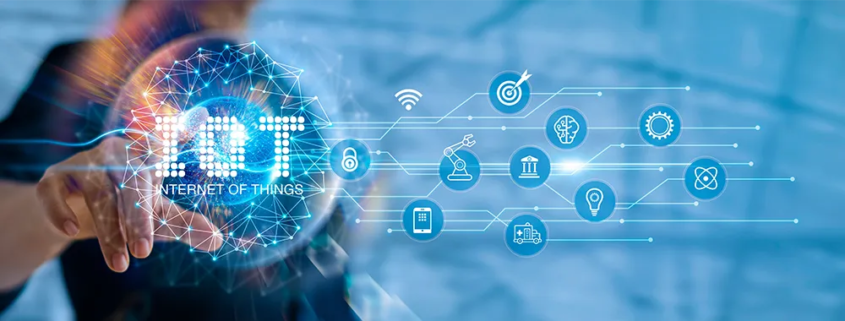IoT Solutions for Companies and OEMs: What are the advantages and concerns?
The Internet of Things (IoT) is the technology that machine manufacturing companies and OEMs are eager to adopt for the benefits it offers.
This is confirmed by the forecasts of Business Insider, which estimates that by 2025 the amount of IoT devices used in various sectors will reach the figure of 55 billion.
Despite this, the introduction of this technology may encounter some obstacles: failed attempts to implement the digitalisation project, strong doubts and fears about how to do it operationally may slow down or hinder the introduction of this technology.
The risk of not aligning, however, is that of losing competitiveness compared to more innovative competitors, as well as the opportunity to occupy new markets, suffering a reduction in turnover and a compression of profit margins. Not only that. The lack of digitalization today represents the primary cause of waste and inefficiencies that can be circumvented thanks to data that guide decisions based on objective information.
To avoid the risks of a technological shortage but, above all, to take advantage of its benefits, it is important to know IoT solutions for companies, which help to integrate this technology in a smooth and sustainable way, without the need to invest in exorbitant amounts, without infrastructure or specialized internal staff.
The most current IoT solutions are standardized and tested all-in-one systems, easy to install and ready to use, that, within an hour, begin to monitor and receive data and performance of each instrument or machine, in real time. They are flexible systems that integrate cybersecurity functions and whose maintenance relieves the company of any worries.
IoT for Businesses: Benefits and Fears
The Internet of Things (IoT) offers significant benefits to businesses by enabling them to automate asset tracking. By replacing manual processes with Internet-connected sensors integrated with central systems, IoT enables real-time tracking of company assets.
This technology greatly simplifies resource management, making it more efficient and precise.
Not only that, the potential of IoT is also to increase customer satisfaction by offering advanced features and personalized experiences.
Two essential characteristics to understand the essence of IoT:
- the automation, which revolves around direct communication between various devices and hardware components without the need for human intervention;
- connectivity: IoT enables greater connectivity within a global network, providing access to vast amounts of information and resources.
Artificial Intelligence, Big Data and Machine Learning are the enabling technologies that support IoT. As well as cloud computing and wireless communication technologies that are the enablers of connectivity.

The obstacles of IoT
Before we look at the benefits of IoT, it is important to highlight the perceived problems (or disadvantages) that concern companies when they want to integrate this technology, but feel held back by some perceived obstacles.
We want to talk about it because it is right to address doubts and fears, to give them a face, also because – given the advantages of the IoT – it is unthinkable to let ourselves be destabilized by problems that are solvable, if only we knew the solutions.
We know, because we deal with customers in the sector every day, that the drive to innovate is strong.
Companies aspire to improve operational efficiency to open up to new business models, but at the same time they report feeling held back by several critical factors.
Among these, there are some that we, as expert IoT service providers, know well, having built – precisely on the basis of those – a product capable of facilitating the process of introducing IoT into the company.
Here are the concerns of companies facing IoT
- Perceived high implementation costs: Despite the potential long-term benefits, the initial investments required to implement IoT solutions can seem prohibitive.
- Skepticism, organizational inertia and resistance to change are often the result of an old-fashioned corporate culture.
- Doubts about the ability to manage the technological complexity and change associated with IoT.
- Lack of specialized skills and in-house expertise: IoT requires specific skills that may not be present within the company. Traditional engineers may have a solid understanding of mechanics, but not digital engineering. Building a team of experts can take time and resources. It can be challenging to select the right technology partners, redesign processes, and manage the impact of change on people and organizations.
- Integrating IoT solutions with existing systems can be challenging in making new technologies communicate and interact with the IT infrastructure already in use. Processes that can require time, resources and planning.
These are just the “macro-fears” so to speak, but there are certainly others: the worries related to the security of IoT systems, the protection of sensitive information and compliance with data privacy regulations. Operations that require complex and expensive interventions. Last but not least, the concerns of employees who see the news as destabilizing changes.
These macro and micro fears slow down, create an internal conflict, a tension between the drive for change and innovation and the resistance due to all the doubts described.
Decision makers are caught between wanting to reap the benefits of IoT and the tendency to procrastinate in order not to face costs and complexity perceived as beyond sustainable thresholds.
Let’s now see what the costs are associated with adopting IoT technologies, which can be burdensome for companies to manage, also considering the problems inherent in implementing IoT systems. Costs that, however, can be reduced thanks to ready-to-use, pay-per-use solutions that do not require maintenance.
Costs for IoT
The costs associated with adopting IoT in enterprises can be broken down into initial costs that include purchasing and installing connected devices, implementing network infrastructure, and configuring software systems.
The costs to be faced also include the recurring ones for the maintenance and updating of IoT devices, network infrastructures and software systems, as well as for the management and analysis of the data generated.
Last but not least, there are the costs of security and privacy: companies must invest in security and data protection to prevent any breaches or cyber-attacks that could cause damage to their reputation and business operations.
Continuing to talk about costs, what is the price to pay for technological paralysis?
What do companies risk when they close themselves off from digital technologies?
Allowing yourself to be blocked by doubts and worries, although legitimate, exposes you to some risks of which it is good to be aware, among these:
– you fall behind your competitors, losing opportunities for differentiation and new sources of revenue, with repercussions on positioning and profits;
– operational efficiency suffers with higher costs and lower performance than competitors;
– it is not possible to develop new business models based on data and value-added services;
– there continues to be little real-time visibility into processes and the supply chain, disappointing market and customer expectations in terms of data-driven services and personalization;
– we remain subject to waste, bottlenecks, and non-optimal strategic decisions due to the lack of real-time data through which to monitor and optimize machines and processes.
It is a general framework but it allows you to have an overall vision to make choices based on knowledge and awareness, supported by more suitable solutions.
The benefits of IoT for businesses
The benefits of the Internet of Things for companies are many and can lead to significant improvements in efficiency, productivity and competitiveness.
Here are the most important ones.
Real-time data collection
IoT enables real-time data collection from connected devices, allowing performance monitoring and more informed, timely decisions. This can lead to reduced waste and operating costs.
Process Automation
With IoT, you can automate a variety of tasks, reducing stress on employees, operating time, and associated costs. Automating routine processes frees up resources to focus on higher value-added activities.
Increased autonomy and productivity
IoT can increase employee autonomy and productivity by providing them with real-time data to make strategic decisions. Additionally, automating routine processes allows them to focus on more complex and creative tasks.
Competitiveness in the sector
By adopting the most advanced IoT technologies, companies can stay ahead of their industry and compete effectively with competitors. IoT can provide a competitive advantage in terms of efficiency, quality, and innovation.
Monitoring consumption and resources
IoT allows you to monitor, manage and optimize resource consumption,
such as energy, water and raw materials. This not only reduces operating costs but also helps reduce the environmental impact of business activities.
Improving customer experience
By integrating IoT into their products and services, companies can make them more responsive and customizable through data analytics. This improves the customer experience in an increasingly competitive market, increasing customer satisfaction and loyalty.
Predicting future trends and behaviors
Predictive analytics based on data collected by IoT allows to predict future trends and behaviors of customers and the market. This allows companies to anticipate trends, explore new business models and make informed strategic decisions.
Increased safety and proactive maintenance
IoT can help increase workplace safety and operational efficiency through proactive maintenance of machinery. By monitoring the condition of workers and equipment, breakdowns and downtime can be prevented, while ensuring compliance with safety regulations.
These benefits represent the transformative impact of IoT for enterprises and OEMs.

IoT solutions for companies and OEMs, the best exists!
In less than 2 months, with a plug-and-play system you can have an IoT app at a fraction of the cost and risk associated with in-house development.
In fact, there are standardized solutions and expert technology partners that guide companies in the rapid implementation of IoT, without the need to develop infrastructure from scratch and without having to face excessive investments, but above all integrating complete, scalable systems with integrated cyber security functionality.
By simply connecting the proven and ready-to-use hardware, the devices become smart and connected. From this moment on, they start collecting and analyzing data in real time, controlling parameters and functions remotely, wherever you are.
With predictable costs and a transparent, consumption-based pricing model, companies can plan their IoT investments to align with their business goals without incurring unexpected expenses.
As mentioned, remote device management also helps reduce costs associated with field repairs and downtime, extending the life of connected products, and improving the overall customer experience.
There are IoT solutions for companies that offer sustainable opportunities with low impact on prices and internal management responsibilities.

